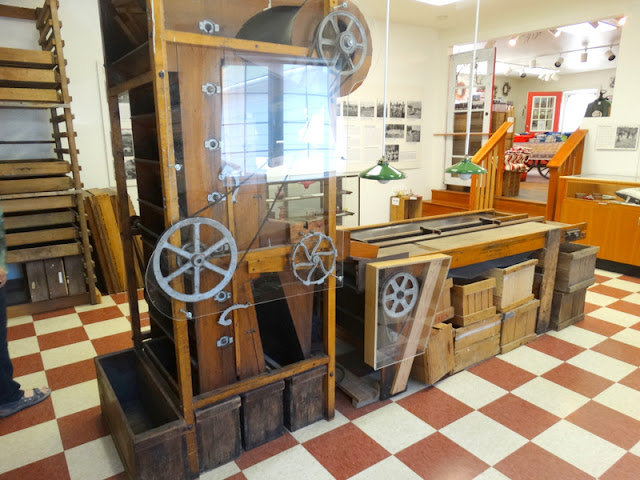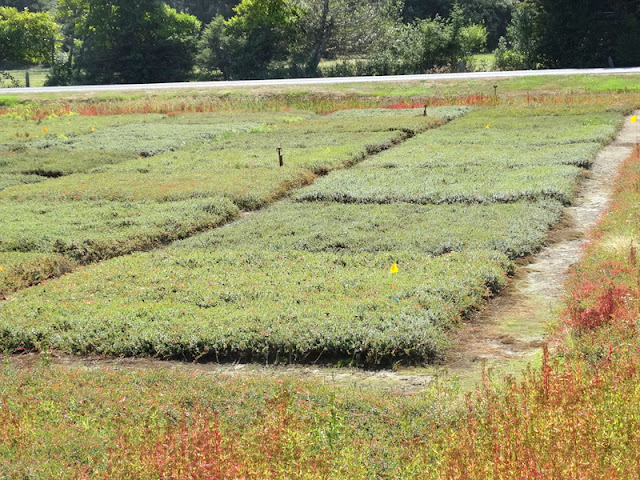The museum is free and traces the history of cranberry growing in the Northwest which dates back more than 100 years. Cranberry farming was brought here from Cape Cod in Massachusetts after observing native berries growing in the marshes. Today there are about 235 growers from British Columbia to Oregon and demand is high thanks to creative and aggressive marketing by Ocean Spray Cranberries, Inc.
The Museum and Gift Shop Building
One of many informative panels in the museum that
trace the history and key phases of the industry from bog preparation and planting to harvesting and marketing cranberry products.
A Furford dry harvest picker
A display of dry harvest cranberry pickers
This Suction Picker (introduced in the 1940s) works much like a vacuum cleaner sucking berries from the plants. Suction isn't used much any more since the
Furford Picker is more efficient.
Cranberry Sorter
Picker Boxes used to measure hand-picked berries.
The rakes at the top are used to hand prune vines.
The tool standing in the center is a "Scalping Hoe" used in bog preparation before the days of bulldozers. The tool above the rakes and the boots is a 1940s version of a "weed eater" that was powered by an electric drill.
Bog Boots designed to minimize damage to vines from walking on them.
The pipe standing on the right was made in the late 1930s of straight-grained Douglas fir wrapped with wire and coated with tar. Hanging on the wall are various sprinkler heads used to irrigate the bogs.
Cranberry sorting equipment
An Ocean Spray Cranberry Color Meter
Sorter equipment in the Museum down the steps
from the gift shop
Rack for sorted cranberries
A display of many cranberry products for sale in the gift shop
Though most cranberries today are "wet harvested" (the bog is flooded and the berries floated from the vines), the museum displays focus on the older dry harvesting equipment.
Once we were finished looking around the museum and gift shop, we took the walking tour of the farm which lies just behind the museum.
Sign typical to the area indicating an Ocean Spray grower
Cranberry bog with test plots
Colored flags mark what's being studied in each test plot.
Close-up of vines in the bog
The bogs have a deep drainage ditch around the perimeter that's supported with wood sides.
A Raptor pole provides a perch for hawks and owls that
keep small rodents out of the bog.
These berries are nearly ready for the harvest.
Garden of Heather provides forage for bees before they pollinate the cranberry blossoms
























No comments:
Post a Comment